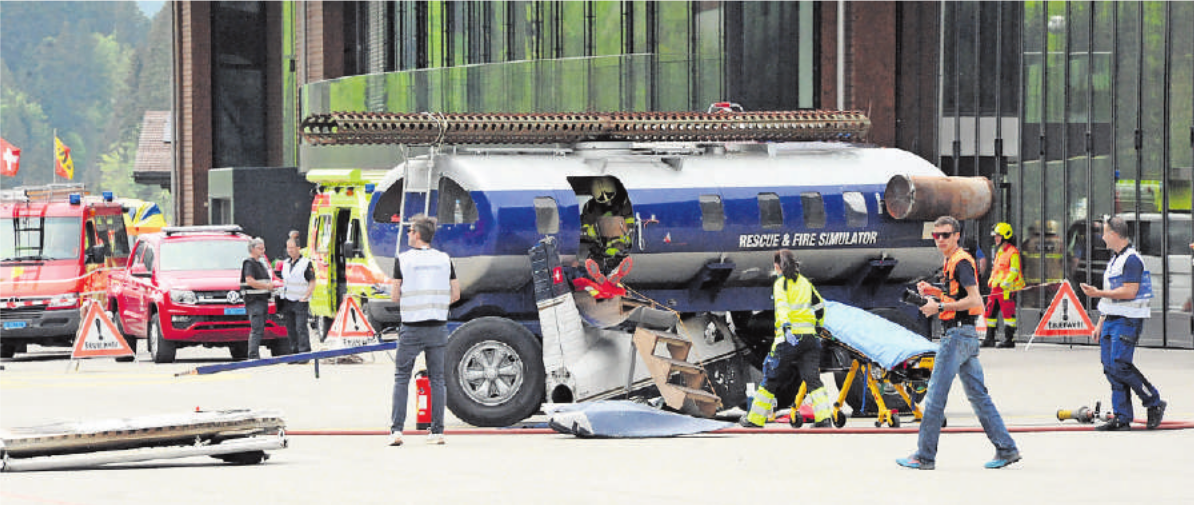Emergency drill at Gstaad Airport
07.07.2022 Local NewsThe Federal Office of Civil Aviation (FOCA) requires the operators of Gstaad Airport AG to conduct an emergency drill every three years. The simulated emergency is intended to optimise the deployment of all rescue forces in the region and test their coordination with each other, as well as to ensure a high level of safety.
A business jet Falcon 7X lost control immediately after landing and crashed into a small aircraft parked in front of Hangar 2.
Relatives of the passengers saw the accident from the arrival lounge and immediately ran to the scene. Burning aircraft debris was falling near the building. Hangar 2 was filled with thick smoke as a part of the wing from the jet had damaged the hangar. It was unclear whether there were still people inside.
The fire brigade, ambulance and police forces did not know what to expect at the scene.
What sounds like a scenario from a disaster movie was in fact the situation to which the fire brigade, ambulance, police, and the crew of Gstaad Airport responded to. Every three years, FOCA requires such an exercise for Gstaad Airport in cooperation with the local emergency services. In previous years, the scenarios were always set up on surrounding roads. This year, and for the first time, the accident site was directly at Gstaad Airport.
Onlookers not to be underestimated
It doesn’t matter whether they are unsettled relatives or eager journalists on the hunt for the next story and – albeit dubious – best accident photos. Often those who are not directly involved in the accident and not involved in the rescue are just getting in the way.
With great commitment, the characters played their parts in the exercise. Besides the distraught daughters of the couple arriving in the jet, there were also unruly members of the press at the scene of the accident. While airport staff looked after the relatives until the ambulance arrived, airport management and the police directed the eager journalists far enough away from the accident site to avoid additional stress for the rescue team.
Communication is key
When so many emergency services are on duty the situation is sometimes confusing, communication must function flawlessly. To avoid complicated and time-consuming explanations of the current situation, the leaders of the rescue services make a sketch of the accident site. These drawings help the workers to orientate themselves when planning the further course of action. Findings about rescued persons, sources of fire and changing circumstances are continuously added. The employees of Gstaad Airport follow the respective checklists in such emergencies. During this exercise, the newly established emergency plan was applied and tested.
“Better is always possible”
All the events were documented by external observers who report to the FOCA. In the subsequent report, the various teams and their operations were analysed. “There is always room for improvement,” explained the deputy airport manager Simone Oehrli, after the drill. Without such exercises, however, they would not be visible, so in this respect it is always a good starting point for improvements.
BASED ON AVS/JENNY STERCHI




